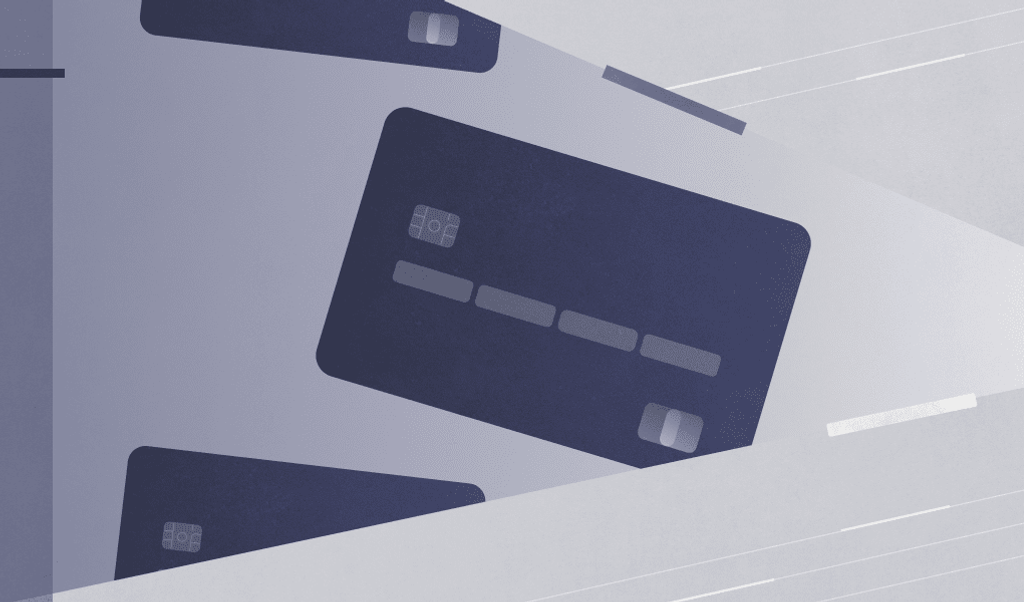
Did you know that someone who completes a chargeback with a business is nine times more likely to do it again?
It's essential for online businesses, especially eCommerce brands, to have a firm grasp of how credit card chargebacks work. Chargebacks don't just cost you money; they can impact customer loyalty and taint your company's reputation. Customers who report credit card fraud may wrongly blame the business and go out of their way to write negative reviews or avoid your business in the future.
The good news is you can protect your business. Chargebacks exploit opportunities within e-commerce systems, but you can reduce those opportunities with preventive measures that keep you and your customers safe.
What is credit card chargeback fraud?
Designed to protect consumers from illegal credit card use, chargebacks occur when customers dispute a charge made on their credit card, and the merchant must refund it. It is designed to protect consumers when their credit cards are used illegally.
Unfortunately, as much as it's nice for the consumer, it ultimately costs businesses money. Chargebacks cost merchants fees and to lose out on the cost of the goods they provided to their customers. Fraud occurs when customers dispute credit card charges and receive refunds from their banks despite the legitimate charge.
For example, if a fraudster uses a stolen credit card to purchase a TV online, the consumer can seek a chargeback once they realize what's happened. The retailer must refund the purchase amount, but they likely have already shipped the TV. That might be acceptable if the TV is returned - except that the return doesn't happen in most cases.
Not only do you lose the TV and the amount of the chargeback on the credit card, but you also lose packaging, labor, shipping, and other costs. It's in the best interest of merchants to take preventative measures through their payment processing system to reduce chargebacks, and their associated fees, as chargeback losses can add up quickly and significantly affect a business's bottom line.
How does chargeback fraud generally take place?
There are a few different examples where chargeback fraud occurs. Some are elaborate scams involving cybercriminals, but others can be everyday consumers exploiting the system.
- A fraudster uses a stolen credit card to purchase something online, also known as a "card not present" (or CNP) transaction.
- The purchaser regrets making the purchase, one of many instances of "friendly fraud" where the purchaser authorized the purchase but still disputes the transaction.
- A person who knows the credit card holder uses their card to purchase on their behalf.
- The purchaser needed help understanding the purchase process.
To initiate the chargeback, the credit card holder disputes the transaction with their bank or credit card company rather than contacting the retailer. The bank can create a refund without requiring the purchased item to be returned to the merchant.
Common causes and preventive measures for credit card chargebacks
1. Fraudulent transactions
Causes
A fraudulent transaction occurs when a person's credit card is used illegally, generally by someone else. The credit cardholder has often had their details stolen.\
Retailers leave themselves open to chargeback fraud without measures to detect and prevent a fraudulent transaction.\
For example, a fraudster may use credit card details obtained in an online data breach for purchasing. The cardholder would initiate a chargeback through their bank when they see a fraudster use their card illegally.
Preventive measures
The best way to prevent chargebacks from fraudulent transactions is to avoid fraud in the first place. A few red flags can signal a transaction is fraudulent:
- The IP address of the purchaser is unusual - i.e., a country you've never sold to before or does not match with the credit card's issuing country or region.
- Someone uses the credit card on many smaller transactions in a short time.
Implementing checks and fraud detection software that can help flag potentially fraudulent patterns of usage and purchases during the checkout process.
2. "Not delivered" packages
Causes
A customer may seek to initiate a chargeback on a credit card if they don't receive their purchase within the expected time frame, even if the package is, in fact, on its way. Retailers should ship purchased goods as soon as possible, except for a backorder, pre-order, or similar circumstances. \
Shipping delays occur that are out of the retailer or recipient's control but sometimes result from human error. If there's a delay, your business may not lose the item, but if you've already sent it, you're at risk of being defrauded.
Preventive measures
- Ensure the most accurate shipping address using an auto-fill service like this one from Google.
- Clearly state the expected delivery date and track deliveries.
- Check your shipped orders regularly for issues or anomalies, such as outstanding deliveries.
- Build standard customer communication processes if a package gets delayed, lost, damaged in transit, or returned.
Even if a package isn't delivered as expected, if you can show the bank that you've done all you could in the dispute process, you stand a greater chance of not having to issue a chargeback.
There's also software that can help small and mid-size businesses save time and protect their revenue. You can use a third-party provider, like Route, for shipping protection that allows the company and the consumer. It covers shipping if anything is lost, stolen, or damaged during transit.
3. Incorrect charges from the account
Causes
Chargebacks can also occur when the purchase's value differs from what the consumer expected. \
For example, customers will likely remember that they bought a shirt for $50 but may not consider the shipping and credit card fees. So, when they see on their credit card statement that the purchase was $60, they want their money back.\
These merchant chargebacks illustrate the importance of communicating the final value of purchases, including any additional charges or fees.
Preventive measures
A bank may side with the consumer in a chargeback dispute if you can't show that you did all you could to convey the total purchase amount. Follow these steps to ensure customer clarity.
- Make additional fees or charges clear on invoices.
- Embolden and enlarge the final value.
- Offer different shipping options so the consumer can select their preference.
- Send a purchase email confirmation, the total amount charged, and a breakdown of any fees, including applicable taxes and shipping costs.
4. Unrecognized business name
Causes
A consumer may initiate a chargeback when they look through their credit card statement and see card usage at an unknown business where their card may have been used without their knowledge or permission. Still, it's also possible that it was a legitimate transaction.
This may also occur if you use a third-party shipping service (3PLs), sell on a marketplace (Amazon, for example), or use other outsourced inventory management solutions.
Preventive measures
- Ensure your business's name appears clearly and prominently on your customers' statements.
- Use your business' trading name.
- Don't disguise your business name with sequences of random numbers and letters.
- Register your business in the same name your customers would use for you.
These measures are about helping your customer associate their purchase with you, so you can even use a name that's not your official registered company.
Recurring payments due to failure to cancel subscriptions
Causes
A customer can request a chargeback if a transaction is processed that's part of a subscription they wanted to cancel but didn't. Automatic renewal may be suitable for business but may also lead to chargebacks.\
For example, customers may deliberately wait for the subscription payment before going to their bank, claiming they forgot to cancel it. The bank may find it in the customer's favor if you need to show that you took steps to remind them the payment was coming up.
Preventive measures
- Send a reminder notifying the customer when a subscription renews each month.
- Send a confirmation email or a receipt once a subscription renews, confirming the purchase.
- In your terms and conditions, mention that you will not be liable for unintended subscription payments.
- Offer an easy and automated process to either put a subscription on hold for a set time or cancel altogether to avoid refund requests or chargebacks.
How to request a chargeback
As a business, you may also find yourself in a position of wanting to request a chargeback. For example, a supplier may have sent faulty goods, or you suspect fraudulent purchases on your behalf.
The chargeback process generally follows these steps:
- You file the chargeback request through your credit card issuer.
- The issuer reviews your dispute and decides if it's valid.
- If it's valid, the issuer passes it on to the card network, such as Visa or Mastercard, which decides if the issuer or the merchant should pay. You may receive a temporary credit at this point.
- If the merchant needs to pay, the card network contacts their bank, either rejecting it and sending it back to the card network or forwarding it to the merchant.
- If it goes to the merchant, they either accept or dispute the chargeback.
- If the merchant disputes it, they'll resolve it with their bank and the card issuer.
- The card network has the final say; if they side with the customer, the temporary credit becomes permanent.
Conclusion
Credit card chargebacks are a great form of customer protection for individuals but can pose expensive business risks. That's why following best practices for receiving online payments and communicating with customers is essential to minimize chargeback risk.
As we mentioned earlier, once one fraudulent chargeback is successful, it's more than likely to happen again by the same user. The risk reduction improves your relationships with your customers and prevents your business from processing fraudulent transactions that tarnish your reputation and create unwanted stress.
Even if you can't prevent customers from attempting chargeback fraud, implementing chargeback prevention measures gives you a greater chance to defend disputes successfully. One of those preventive measures can be implementing software for accurate user identification, such as Fingerprint, which helps reduce chargebacks by authenticating purchases before they occur.
Learn even more chargeback prevention tips here.



